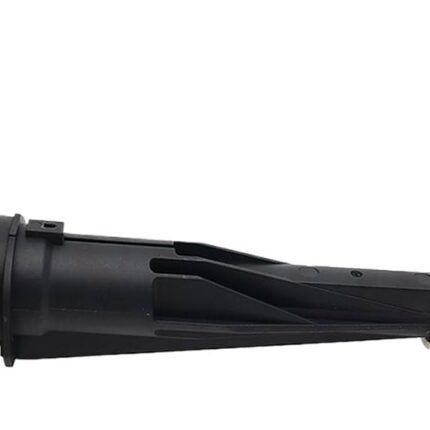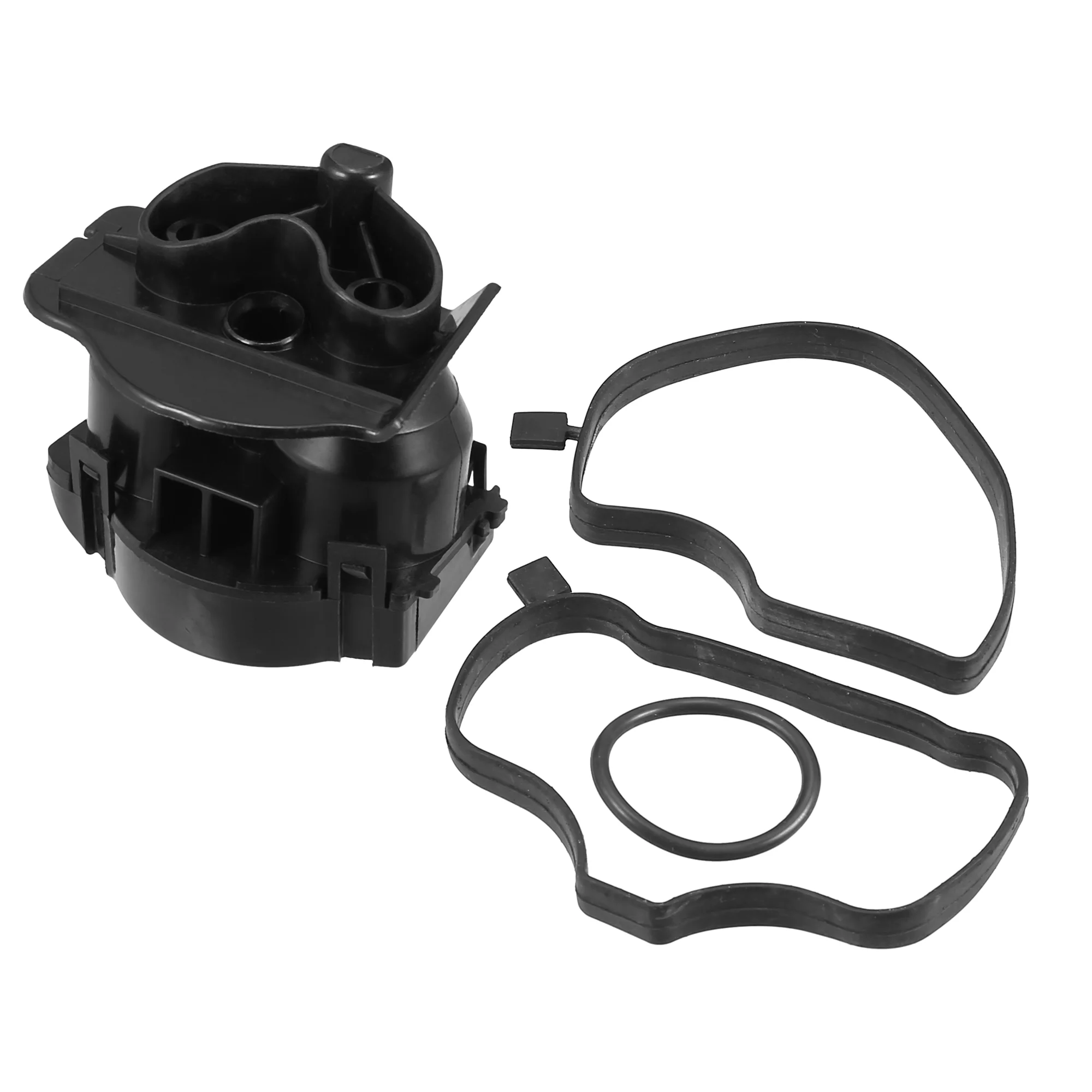-18%
Get BMW X5 E70 Crankcase Oil Breather Separator 11127799366 in Kenya
The crankcase oil breather separator is a vital component of modern internal combustion engines, ensuring the engine operates efficiently and complies with environmental regulations. This device plays a critical role in managing the crankcase ventilation system by separating oil particles from blow-by gases and redirecting them appropriately. This guide delves into the purpose, components, benefits, maintenance, and common issues associated with crankcase oil breather separators.
What is a Crankcase Oil Breather Separator?
A crankcase oil breather separator, also known as an oil separator or breather valve, is a device that separates oil mist from the blow-by gases produced in the engine’s crankcase. Blow-by gases occur when small amounts of combustion gases leak past the piston rings and into the crankcase. These gases contain oil particles, fuel vapors, and contaminants.
The breather separator ensures:
- Oil is separated and returned to the crankcase.
- Cleaned gases are redirected back to the intake manifold for combustion or released into the atmosphere.
This device reduces oil consumption, prevents contamination, and contributes to better engine performance.
How Does a Crankcase Oil Breather Separator Work?
- Collection of Blow-by Gases:
- Blow-by gases accumulate in the crankcase during combustion.
- These gases contain oil particles, unburned fuel, and other contaminants.
- Entry into the Separator:
- The gases are routed through a breather hose into the oil separator.
- The separator is typically located near the valve cover or integrated into it.
- Oil Separation:
- Using centrifugal force, baffles, or a mesh screen, the separator removes oil particles from the gases.
- The separated oil collects and drains back into the crankcase.
- Ventilation:
- Cleaned gases are sent to the intake manifold for re-combustion or expelled through the PCV (Positive Crankcase Ventilation) system.
- This reduces harmful emissions and ensures environmental compliance.
Components of a Crankcase Oil Breather Separator
- Housing:
- The exterior casing that protects the internal components from heat and contaminants.
- Baffles or Mesh Screens:
- These structures trap and separate oil droplets from the gases.
- Drain System:
- Channels that return the separated oil to the crankcase.
- Inlet and Outlet Ports:
- Connect to the crankcase and intake manifold for gas flow.
- Pressure Control Valve (PCV):
- Regulates the flow of blow-by gases and prevents pressure buildup in the crankcase.
Benefits of a Crankcase Oil Breather Separator
- Reduced Oil Consumption:
- By separating and returning oil to the crankcase, it minimizes oil wastage.
- Enhanced Engine Efficiency:
- Prevents oil from entering the intake system, which could lead to deposits on intake valves and pistons.
- Environmental Compliance:
- Reduces harmful emissions by cleaning blow-by gases before reintroducing them into the combustion process.
- Extended Engine Lifespan:
- Prevents contamination and buildup in the intake system and other components.
- Improved Fuel Economy:
- A cleaner intake system results in better air-fuel mixture and combustion efficiency.
- Prevention of Pressure Build-up:
- Proper ventilation prevents excessive pressure in the crankcase, which could cause seal damage or oil leaks.
Signs of a Faulty Crankcase Oil Breather Separator
- Excessive Oil Consumption:
- A malfunctioning separator may fail to return oil to the crankcase, leading to higher oil usage.
- Engine Misfires:
- Oil entering the intake manifold may cause misfires due to improper combustion.
- Oil Leaks:
- Increased pressure in the crankcase from a blocked separator can cause oil to escape through seals and gaskets.
- Check Engine Light:
- Faulty ventilation or excessive oil in the intake system may trigger a warning light.
- Smoke from the Exhaust:
- Oil that enters the combustion chamber may burn, producing blue smoke.
- Reduced Engine Performance:
- Contaminated gases in the intake system can lead to power loss and reduced fuel efficiency.
Common Causes of Crankcase Oil Breather Separator Failure
- Clogging:
- Dirt, sludge, or carbon deposits can block the separator, reducing its efficiency.
- Wear and Tear:
- Over time, components like baffles or mesh screens may degrade or break.
- Faulty PCV Valve:
- A malfunctioning valve can disrupt pressure regulation, affecting the separator’s performance.
- Poor Maintenance:
- Irregular oil changes or using low-quality oil can contribute to separator issues.
- Age:
- As the vehicle ages, the breather separator may lose its effectiveness.
Maintenance Tips for a Crankcase Oil Breather Separator
- Regular Inspections:
- Check for leaks, cracks, or blockages during routine maintenance.
- Replace the PCV Valve:
- Change the valve as recommended by the manufacturer to ensure proper ventilation.
- Clean or Replace the Separator:
- If the separator is clogged or damaged, clean or replace it as necessary.
- Use High-Quality Oil:
- Quality engine oil minimizes sludge buildup and reduces wear on components.
- Follow the Manufacturer’s Schedule:
- Adhere to the recommended service intervals for optimal performance.
Steps to Replace a Crankcase Oil Breather Separator
- Gather Tools and Supplies:
- Wrenches, screwdrivers, and a new separator are essential.
- Locate the Separator:
- Refer to the vehicle’s manual to find its position, usually near the valve cover.
- Remove Components:
- Disconnect hoses and fasteners to access the separator.
- Remove the Old Separator:
- Carefully detach it and inspect for damage or clogging.
- Install the New Separator:
- Secure the replacement unit and reconnect all hoses and fasteners.
- Test the System:
- Start the engine and check for proper operation and absence of leaks.
Environmental Impact
Crankcase oil breather separators significantly reduce emissions by preventing unburned hydrocarbons from being released into the atmosphere. This ensures compliance with environmental standards and reduces the vehicle’s ecological footprint.
Conclusion
The crankcase oil breather separator is an essential component for maintaining engine health, improving performance, and reducing emissions. Regular maintenance, timely replacements, and using quality components ensure its longevity and effectiveness. Understanding its role and importance can help vehicle owners prevent costly repairs and keep their engines running smoothly.
Follow us on Facebook for more parts.




Reviews
Clear filtersThere are no reviews yet.